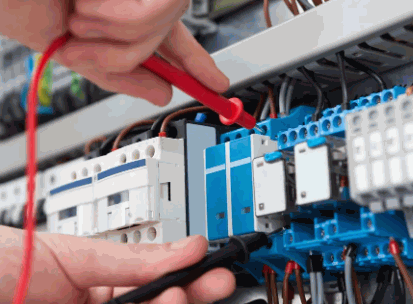Need a grant for LED upgrades or
voltage optimisation? (read more)

Need a grant for LED upgrades or
voltage optimisation? (read more)



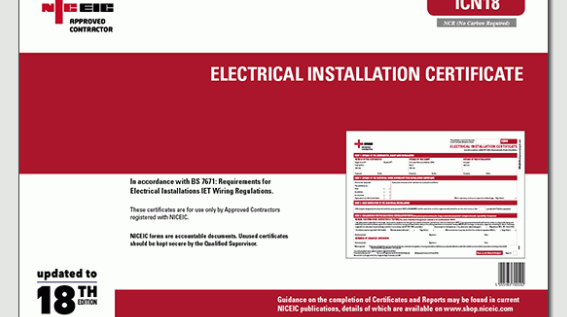
Here at the Powervolt Team, electrics and electrical systems are a way of life! We immerse ourselves in all things electrical, keeping on top of the latest technology and trends and making sure all our expert staff get up-to-date training.
It's all part of our mission to deliver the best possible service to our customers.
With this in mind, we're going to share our knowledge on the cost of an electrical installation condition report (EICR) to help you master the nuances of this important subject.
In order to cover this topic adequately, we'll explore all the different facets and angles, including an overview of what an EICR is, why they are beneficial, and what the laws are regarding them.
So, if you're already up-to-speed with the technical details of Electrical Installation Condition Reports, then feel free to pick out the sections that focus on the EICR report cost. If, however, you want to learn a little more about EICRs and understand where your money is being spent, then you'll find all you need to know in our comprehensive blog.
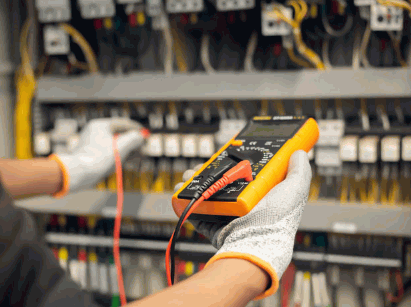
Before we look at Electrical Safety Certificate prices, let's take a look at that name:
Although often referred to as an EICR report (as we have done a couple of times already to prove a point), it's not necessary to add 'report' at the end as EICR means Electrical Installation Condition REPORT.
Next, they're also known as Electrical Safety Certificates, so if you hear this term, you can be pretty sure that it's kind of the same thing, as the certificate is awarded following the inspection and report - provided all is found to be in order. This is sometimes made more specific, as in the Landlord Electrical Safety Certificate, hinting at the legislation affecting rented property (more on this later).
Finally, you might also hear them referred to as Periodic Inspections, and some people use the name Electrical Safety Check. It's not done to confuse you! It's the result of various changes in legislation over the years where terms change at a different rate to the technology involved.
Whatever you choose to call them, the fact remains that they are a useful and potentially lifesaving test.
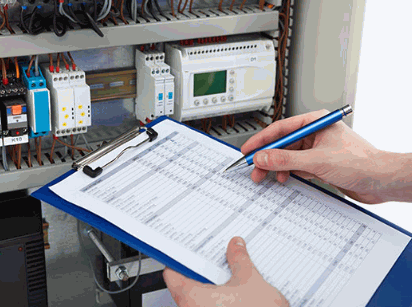
During an inspection, a qualified electrician examines the property's electrical systems to check for defects or damage. They will compile an electrical inspection report to this effect and will detail any remedial work or repairs that are required.
The idea is to ensure that all the electrical components, systems, equipment, wiring, and appliances are safe to use and that they won't (as far as is practical and achievable) cause harm or damage through electrical fires or shocks.
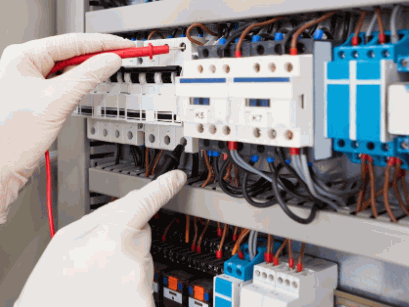
A typical Electrical Installation Certificate report usually documents the following information:
In addition to the above, the EICR may also include other information, such as:
The EICR should be provided to the landlord or property manager of the property. The landlord is then responsible for ensuring that any recommended remedial work is carried out.
Most importantly, the report will contain one of the following codes that will be generated after the electrician has completed the necessary electrical safety checks:
This code indicates that there is a serious risk of injury or death from the electrical installation. Immediate remedial action must be taken to address the problem.
This code indicates that there is a potential risk of injury or death from the electrical installation. Urgent remedial action must be taken to address the problem.
This code indicates that there is a non-urgent issue with the electrical installation that could potentially pose a risk of injury or damage. However, the risk is not immediate, and remedial action can be considered at a convenient time.
This code indicates that there is an issue with the electrical installation that requires further investigation to determine the extent of the problem and the necessary remedial action.
Categorising these electrical safety hazards provides a clear framework for property owners, landlords, and occupants, allowing them to prioritise remedial actions. By differentiating between urgent, non-urgent, and investigative issues, this system ensures that immediate dangers are addressed swiftly while also allowing for proactive planning to address less critical issues. This approach effectively maintains overall electrical safety and minimises potential risks.
Take a look: The Energy Trilemma
Faulty appliances and electrical equipment, along with damaged and faulty wiring in the electrical system, are among the leading causes of fires. They can also result in an electric shock, leading to injury or death.
Whether you're a landlord or business owner, it's up to you to keep everyone who lives in, works in, or visits the building as safe as possible.
When you hold an electrical safety certificate, you have proof that you have taken all necessary precautions and measures to ensure a safe environment for all.
You guessed it; it all depends!
The final cost of an electrical installation condition report will be affected by its size, complexity of the electrical circuit board, location, building type, and how qualified and experienced the electrician is.
We can also break it down into two separate categories: commercial and domestic electrical reports.
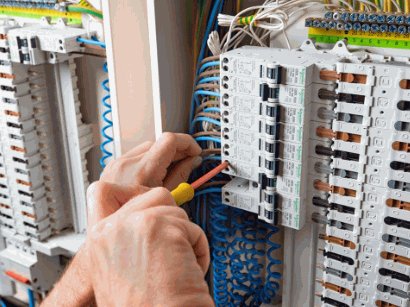
Starting with the domestic side, we can suggest a figure between £125 and £350, depending on the size of the property. Here's a quick guide to illustrate the point:
Here is a breakdown of the average cost of an EICR by property size:
As a general rule of thumb, you can expect to pay anywhere from £200 to £500 for an EICR on a commercial or industrial property.
Here's a more detailed breakdown of the cost based on the size of the property:
The cost may also increase if the property has any special features, such as extensive electrical installations, hazardous areas, or complex machinery. Additionally, electricians in London and other major cities may charge higher rates than those in smaller towns or rural areas.
But there's more! Here are some additional factors that can affect the cost of an electrical certificate:
When engaging an electrician for this job, be sure to ask about their qualifications, experience, and pricing structure to help you make an informed decision.
During an EICR inspection, an electrician will conduct a thorough assessment of the electrical installation in a property to identify any potential hazards or defects. This involves both visual inspection and electrical testing.
*In domestic settings, it can be difficult to access all of the sockets as they are often obscured by furniture, etc. In some cases, it simply isn't practical to test every single socket. When this happens, the electrician will test as many as possible and check for any anomalies in the electrical circuits to rule out any potential problems. This will be duly noted on the report.
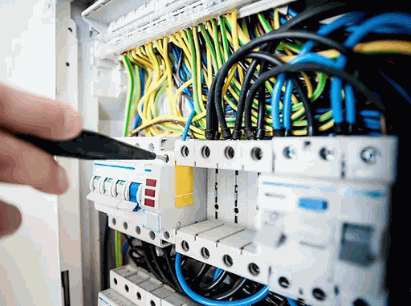
By conducting both visual inspection and electrical testing, the electrical engineer can identify any potential hazards or defects in the electrical installation and provide recommendations for remedial work. This helps to ensure the safety of the property and its occupants.
As you can tell, there can be a fair amount of technical work to get through! And on that note, we'll jump to our next point.
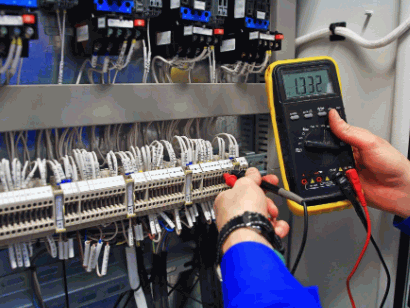
Again, it depends on the size and complexity of the property, as well as how experienced the electrician is. That's not to say that a qualified professional electrician would rush the job; it's just that they would work more efficiently.
On the whole, we can say that it would probably take a competent electrician somewhere between one and four hours to complete an EICR inspection on a domestic house. Obviously, the larger the house and the more electrical installations there are, the longer the process will take.
As the law stands, it must be undertaken by a competent and qualified electrician. This term is somewhat open to interpretation, and you might be inclined to engage a less-experienced or underqualified electrician in order to cut costs.
In the humble opinion of the Powervolt Team, this would be asking for trouble, as this job requires skill and experience. Employing someone without the necessary know-how not only puts you and your building at risk but could also render your electrical installation certificate invalid.
Only registered electricians are allowed to perform an EICR, but it's wise to go further and make sure they are affiliated with an official organisation, such as the National Inspection Council for Electrical Installation Contracting or the Electrical Contractors Association.
Basically, this comes down to the property owner. In the case of rental property (both residential and commercial), the landlord is responsible. In the case of social housing, this responsibility falls to the local authority or housing association.
For businesses, if the building is yours, you must pay for the electric safety certificate.
PAT testing can be undertaken at the same time, although it carries its own set of costs.
In case you're unfamiliar with this term, PAT stands for portable appliance testing (so, again, the word 'testing' doesn't need to be added on!), and it involves checking all electrical appliances for defects or damage that could present a hazard.
While it's not compulsory for landlords unless it forms part of a legal contract or licensing condition, it's highly advisable.
Likewise, businesses are recommended to apply portable appliance testing to all electrical appliances in the building. This protects your staff and visitors from harm and also makes sure you are covered in the event of any incidents where an injured party considers legal action against you.
As for costs, you should expect to pay between £1 and £3 per item, although you could negotiate this if you have a large number of portable electrical appliances. Some electricians prefer to set an hourly rate, usually between £40 and £60.
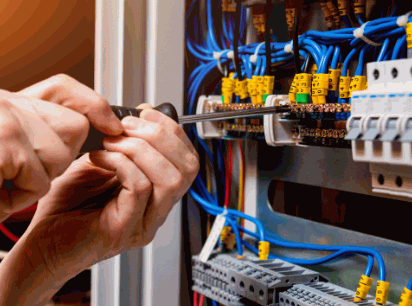
Here we run into some confusion: many sources, including plenty of electricians, state that it is mandatory for all businesses to have an EICR certificate or electrical safety certificate.
This is not, in fact, the case. At least, the law doesn't currently say so, but this could change at any time.
For the sake of clarity, let's look at the facts:
As of 2023, electrical safety testing for rental properties in the UK is regulated by The Electrical Safety Standards in the Private Rented Sector (England) Regulations 2020 and the Housing Act 2004. These regulations apply to all tenancies in England, including new tenancies created on or after 1 June 2020 and existing tenancies from 1 April 2021.
Key legal requirements for getting an EICR in the UK:
Failure to comply with these regulations could result in a fine of up to £30,000. Landlords may also be liable for damages if a tenant is injured or their property is damaged due to a faulty electrical installation.
In addition to the above requirements, the Electrical Safety Standards in the Private Rented Sector (England) Regulations 2020 also provide guidance on the following:
Landlords should familiarise themselves with these regulations and ensure that they are in line with electrical compliance rules under the current building regulations.
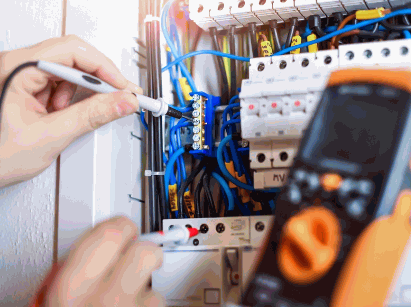
This is important, as you'll want to know how often you need to pay out for a new electrical certificate so you can budget for the electrical safety certificate costs.
depends on the property type and location.
For rental properties in England:
Landlords must provide tenants with a copy of the EICR within 28 days of the inspection and test. Additionally, they must provide a copy to the local housing authority upon request.
For commercial and industrial properties in England:
For rental properties in Wales:
For rental properties in Scotland:
It's crucial to consult with your local authority for the most recent regulations in your area if you have any doubts!
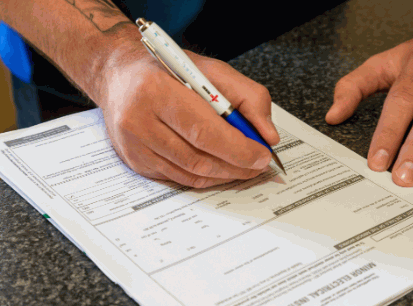
An Electrical Installation Condition Report is not a legal requirement when buying or selling a house in the UK. However, it is often recommended to have one done as part of the conveyancing process. This can help to protect both the buyer and seller from potential liability for any electrical faults found in the property.
Need further convincing? Check out some of the benefits:
Remember to book the EICR well in advance! This will give the electrician plenty of time to carry out the inspection and prepare the report.
Overall, having an EICR done when buying or selling a house in the UK is a good idea to protect both the buyer and seller from potential liability and to increase the value of the property.
While domestic homeowners in the UK are not obliged by law to get an EICR (Electrical Installation Condition Report), it is generally recommended to have one done every ten years. This is because electrical installations can deteriorate over time, and an EICR can help to identify any potential hazards before they cause a problem.
If you are a homeowner, you may want to consider getting an EICR more frequently if:
Getting an EICR is a simple and relatively inexpensive way to help keep your home safe from electrical hazards. If you are a homeowner, it's best to get an EICR done every ten years or more frequently if you have any of the concerns mentioned above.
Here are some additional benefits of getting an EICR for domestic homeowners:
If you are a domestic homeowner, the Powervolt Team highly recommends getting an EICR to help keep your home safe from electrical hazards.
If you're a landlord with one rented property or a whole portfolio, it's your responsibility to arrange for the necessary electrical checks and ensure that all electrical work carried out is only performed by certified electricians.
By law, you must obtain an electrical safety report for your properties and safeguard your tenants.
For businesses, it's advisable but not compulsory.
And for all others, it's a sensible measure that carries many benefits.
At the Powervolt Team, we believe it makes good sense, whether compulsory or not. And it's well worth the cost, especially when you consider that it protects people and property from devastating and potentially fatal consequences!
